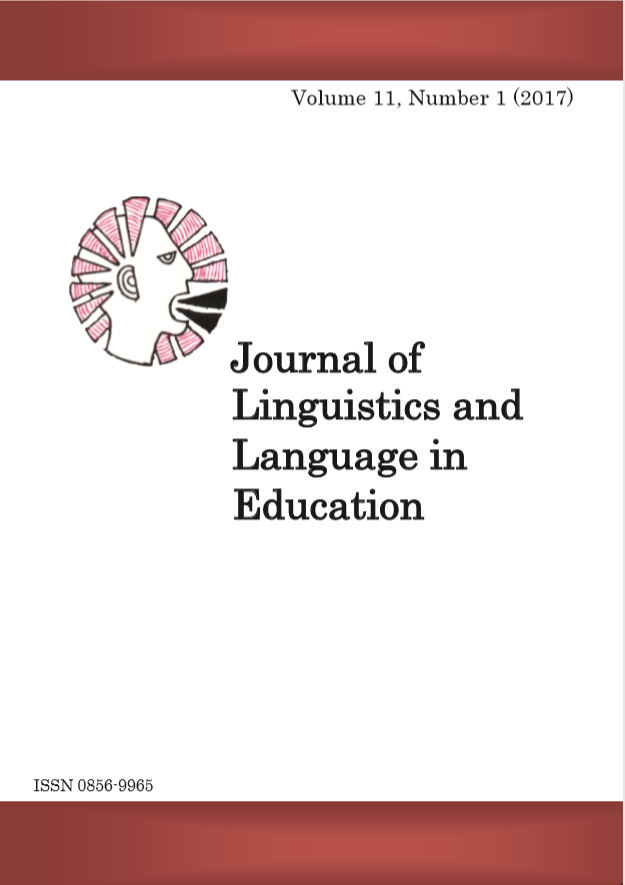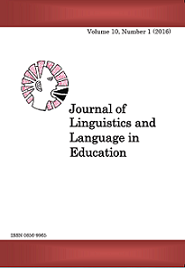Aesthetic Attires and Aura of Nigerialization in Rihlat ' L-Bahth ' An Insan (Travelogue)
Abstract
Rihlat 'li-Bahth ' an insaan (Travellogue) is a play written and acted in
Arabic Language. Language is the searchlight and vehicle through which
social reality is beamed and shaped. Through language, a literary scholar
communicates with the unknown readers and projects their thoughts and
ideological dispositions. Therefore, the most significant items of any work
of literature have been recognized to be channelled through words which
reside in the particular range of meanings and attitudes which members
of any society attach to their verbal symbols, the mode of writing and
features of literary text that reflect some social practices in the society of
playwright. In the light of the above, this paper examines the linguistic
features of Rihlat 'li-Bahth ' an insaan, using a descriptive analytic
method to depict the post-colonial context of Nigeria and
Schleiermacher ' s Hermeneutic theory for understanding of the text was
considered appropriate for the study. Rihlat 'li-Bahth contains important
events that are common in the contemporary Nigerian society. In the
aesthetic view and linguistic choice of the author, the words related to
Nigerian society and its expressions were chosen to depictthe state of
Nation. The paper discovers that linguistic choice of the author and the
contexts of the play reflect the state of Nation and the author of Rihlat ' libahth
like other playwrights showcases the unresponsive nature of the
ruling class. The study concludes that the author skillfully draws from a
pool of narrative experiences and successfully established the social
situation of his country, Nigeria
References
Ali, A. Y. (1983). The Holy Qur ' an. America: Amana Corporation
Press.
Iskandariya, A. (n.d.). Al-Mufassal Fi tarikh 'l-araby.Cairo:
Wizaarat ' limaa ' ruf li- ' umumiyyay.
Iskandany, A. & Amin, M. (n.d.) Al-Wasit fi'l-Adaba-l-arabiywa
Tarikhi. Misra: Dar al-ma 'aruf (n.d.) (16th Edition).
Abu Qasim b. Muhammad. (n.d.). Sharih maqamah'l-Hariri.
Lebanon: Dar'l-Fikr.
Adetunji, B. (2005). Baqau Muqadar. Nigeria: Abeokuta: At-
Tayyibun Islamic Outlook.
Journal of Linguistics and Language in Education Volume 14, Number 2 (2020) |79
Al-Kali, M. N. (1983). The Political System and Administrative
Structure of Borno under the Seifuwa Mais. Studies in
History of Pre-colonial Borno . Al-Kali & Usman (eds.).
Kaduna: Northern Nigerian Publishing Company.
Badawi, M. M., Cachia, P., Lyons, M. C. & Mattock, J. J. (1970).
Naqqash and the Rise of the Native Arab Theatre in Syria
Journal of Arabic Literature, 3: 108.
Badawi, M. M. (1998). Early Arabic Drama. Cambridge: Cambridge
Press.
Balogun, K. A. (2005). Rihlat 'l-bahth 'an insani. Ilorin:
Taofiqullahi Publishing House.
Balogun, K. A. (2009). Rihlat 'l-bahth 'an insan. Saudi-Arabiyyah:
Madinah.
Bowie, A. (1998). Friedrich Schleiermacher ' s Hermeneutics and
Criticism and other Works. Edinburgh, London: Cambridge
University Press.
Dairo, A. L. (2015). Man, Language and Identity: Linguistic
Consideration for National Development. The 71st Inaugural
Lecture. Olabisi Onabanjo University: Olabisi Onabanjo
University Press.
Galadanchi, A. S. (1993). Harakat al-Lughat al-Arabiyyah wa
Adabiha fiNayjiriya. Cairo: African Press.
Hitti, P. K. (1970). History of the Arabs (10th Edition). London:
Macmillan.
Hornby, A. O. (2001). Oxford Advanced Learner ' s Dictionary of
Current English (6th Edition). London: Oxford University
Press.
Hunwick, J. O. (1995). Arabic Literature of Africa (ALA). The
Writings of Central Sudanic Africa. Brill: Leiden.
Jah, U. (1975/76). "Research Bulletin": Centre of Arabic
Documentation Institute of African Studies, Universities of
Ibadan.
Khani, A. M. (1984). The Intellectual Origin of Sokoto Jihad . Ibadan:
Iman Publications.
Landau, J. M. (1958). Studies in the Arab Theater and Drama.
Philadelphia.
Mossa, ' Ya ' qub, M. (1954). Sanu ' and the Rise of Arab Drama in
Egypt ' in the International Journal of Middle East Studies,
: 401-433.
Najm (1967). Al-masrahiyya fi al- Adab al €“Arabi al-Hadith.
Lebanon: Beirut.
Nicholson, R. A. (1969). A Literary History of the Arabs. London:
Cambridge University.
| Aesthetic Attires and Aura of Nigerialization
Oseni, Z. I. (2002). Prose and Drama in Nigerian Literature in
Arabic : The Journey so far. 53rd Inaugural Lecture of the
University of Ilorin.
Oseni, Z. I. (2005). Al- 'Amid al-Mubajjal. Nigeria, Auchi: Daruu-
Nur.
Scott, J. & Starkey, P. (1998).Encyclopedia of Arabic Literature .
London & New York
Downloads
Published
Issue
Section
License
Copyright © by Department of Foreign Languages and Linguistics, University of Dar es Salaam
All rights reserved. No part of this publication may be reproduced or transmitted in any form or by any means, electronic or mechanical, including photocopying, recording, or any information storage or retrieval system, without permission in writing from the publisher, except for short extracts in fair dealing, for research or private study, critical scholarly review or discourse with an acknowledgement.



